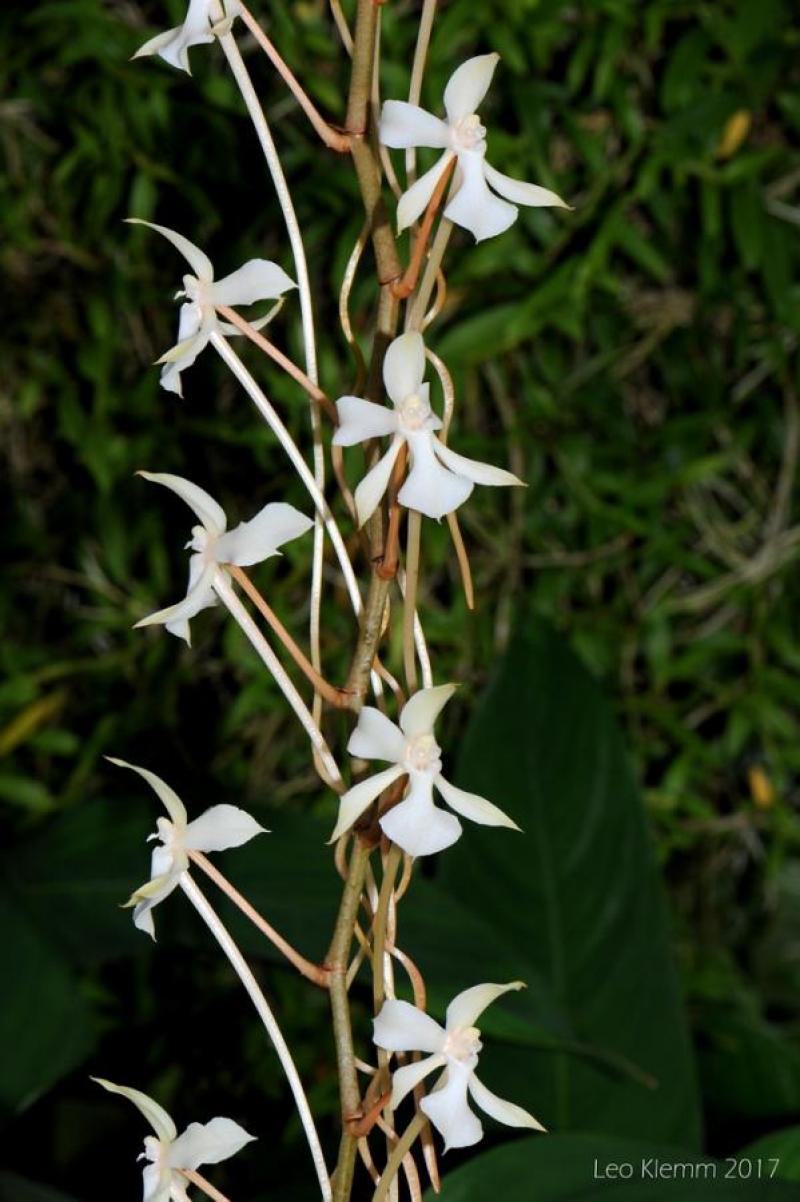Aerangis kotschyana
Also known as: Kotschy's Aerangis or Rhaphidorhynchus kotschyi Aerangis grantii Aerangis kotschyi Angraecum kotschyi Angraecum grantii Angraecum semipedale Angraecum kotschyanum in the subfamily: Epidendroideae
Native to: Burundi Ethiopia Kenya Malawi Mozambique Nigeria Rwanda Sudan Uganda Zambia Zimbabwe
General Information
Kotschy's Aerangis is a medium sized warm to hot growing epiphytic orchid belonging to the sub family Epidendroideae native to Burundi, Ethiopia, Kenya, Malawi, Mozambique, Nigeria, Rwanda, Sudan, Uganda, Zambia, and Zimbabwe. It is named after the German Collector in Sudan in the 19th century.
Plant Description
Grows to 0.7-20cm. Each new growth has numerous leathery thick, arching leaves that grow to 2-30cm long. Pseudobulbs grow to 20cm
Flowers
Numerous long lasting blossoms appear
Substrate(s)
- Coarse
- Bark
Care Notes
These orchids like to be watered regulary, especially during warm weather, and prefer a well draining mix or also do well mounted, provided they can be watered daily or even many times a day.
These are quite a forgiving orchid, there are no special requirements to get this orchid to flower, just good care and consistent conditions. Larger plants may be more fussy and can react poorly to change; a poorly timed repotting, a pest infection or an unusually hot day can set them back for a couple of years. However, even plants that have been treated poorly can thrive, and if they are set back they often recover much stronger then they would otherwise be.
Climate
Grows at low to high elevations. Rainfall ranges from 15mm to 351mm per day, heaviest in October and lightest in March. Humidity ranges from 57% to 77%, highest in November and lowest in April. Temperature ranges from 16C to 33C, highest in July (19C to 33C) and lowest in January (16C to 26C).
Watering
These orchids prefer a wet-dry cycle between waterings, they should be watered frequently but only when the moisture is approaching dryness, where the pot feels light and/or the media looks dry. Keep an eye on mounted orchids in warm weather as they may dehydrate quickly.
Fertiliser
These plants thrive on fertiliser, especially during periods of growth. Liquid fertiliser can be applied year round at the recommended strength, augmented with manure pellets or other quickly degradable fertiliser, applied away from the base of the plant, during periods of strong growth. Slow release pellets can also be applied year round at the rate of 2-3 pellets per cup (250ml) of media.
They can benefit from a high phosphate fertiliser leading up to flowering season, and by a high nitrogen fertiliser when new growth appears.
Use balanced fertiliser year round. Use a high Nitrogen fertiliser during Spring and Summer. Use a high Phosphorous fertiliser during Summer.Potting
Due to the growth nature of these plants they are best mounted onto cork, tree fern slabs, or even trees if the climate suits. Water regularly especially in hot weather.
This plant does very well in baskets or suspended pots This plant does well mounted to Tree trunks or Fern slabs. Repotting is best done annually.



















